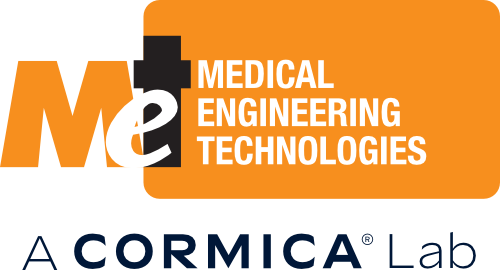What do SCT and AET Mean?
Here, we explain the difference between Safety Concern Threshold (SCT) and Analytical Evaluation Threshold (AET).
Extractables and leachables examination is extremely important for the protection of patients.
A leachables or extractables ‘profile’ presents an overall picture of the leachables contained in a medical device formulation or the extractables removed from it under laboratory investigation.
Medical Engineering Technologies conducts extractables and leachables studies for medical devices to show if materials are transferred from the medical device to a patient.
Extractables are defined as container-closure contaminants that can be extracted from plastic (and other materials) under exaggerated conditions using a solvent.
Leachables are those substances that are likely to be present in the therapeutic product due to its contact with a production system (and storage), container, and delivery system.
Safety thresholds (SCTs) have been proposed for patient exposure to many of the individual chemicals that might be identified in these studies. Generally, the investigational equipment used by an analytical chemist reports chemicals found in concentrations of PPM or PPB. The toxicological investigator needs to know how these levels correlate to the SCTs and when the SCTs have been exceeded. The application of an SCT to a concentration identified in the analysis for a particular chemical requires a conversion into the Analytical Evaluation Threshold (AETs).
The Analytical Evaluation Threshold is defined by PQRI as ‘the threshold at or above which an Oral Inhaled Nasal Drug Product (OINDP) pharmaceutical development team should identify and quantify a particular extractable and/or leachable and report it for a toxicological risk assessment.’
To establish the AET, PQRI recommends starting with a Safety Concern Threshold (SCT), of 0.15µg/ day total daily intake for an individual organic leachable found in an OINDP. It is important to note, however, that the SCT varies according to route of administration.
The estimated AET is a conversion of the SCT to a drug-specific analytical threshold, while the final assessment includes an estimate of the uncertainty of the particular analytical method/technique that produces a particular leachables/extractables profile. An alternative method is to divide the AET by two to give the final assessment. This involves less laboratory work and provides an equally appropriate uncertainty estimate.
In chromatography the peak height/area and location of an internal standard material on the chromatogram profile are used to extrapolate the AET.
The Safety Threshold and AET concepts represent a big step forward in extractables and leachables studies, however, while it might be easy to determine both estimated and final AET for extractables/leachables profiles achieving the right sensitivity is the secret key in E&L profile using analytical techniques.
You can read more about chemical profiling here.
